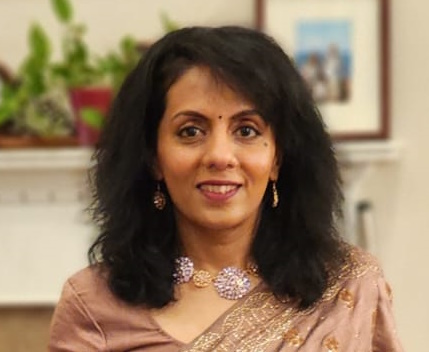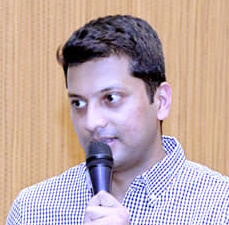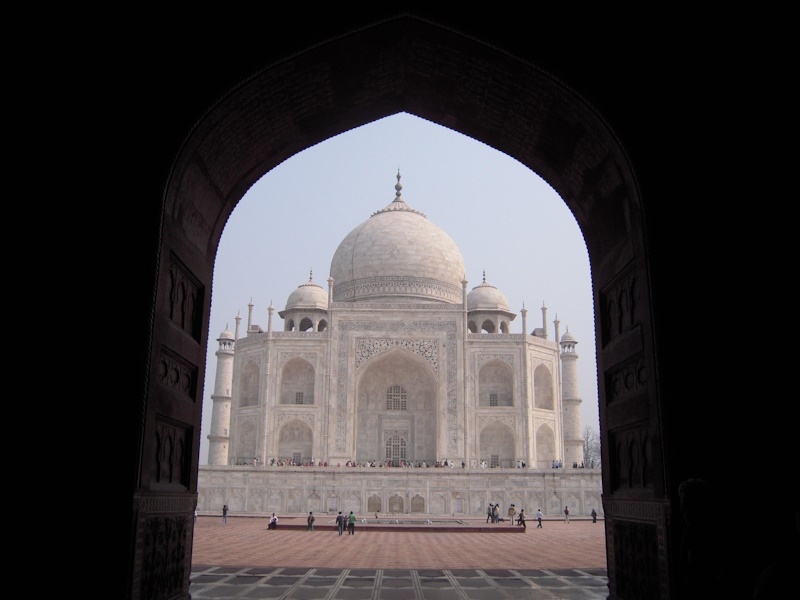
Hope my readers had a delightful Valentine’s Day with family, friends, and happy moments. February is American Heart Month. This is a great time to get to know your heart better and focus on your cardiovascular health. Preventive measures to reduce the risk of heart disease can also help improve your overall health and well-being – a win-win approach to wellness!
COMA is gearing up for its inaugural event of 2024 – promising a full day of fun with tournaments, games, cultural performances, dinner, and culminating in an electrifying glow party and DJ night. If you haven’t secured your tickets already for the Kaliyattam event on March 2nd, please do so through the COMA website. Tickets are available for both the daytime tournaments and the evening dinner event:
Congratulations to Nijith Zacharia for winning the COMA Kaliyattam poster design contest. Here’s the prize winning poster:


Invest in your heart – Dr. Niju Baby Narakathu
(Niju is an Internal Medicine Physician who works as a hospitalist at Riverside Methodist Hospital, Columbus, and Genesis Health system, Zanesville. He is from Perumbavoor, Kerala who completed residency in New York and moved to Columbus in 2017. He lives in Powell with his wife Katherine and two beautiful daughters – Joella and Qianna.)
I believe there is no month other than February, the month of “love”, to think about our heart, but in a “different” way. Understanding heart health allows us to recognize and reduce the risk factors for heart disease. By educating ourselves we can make healthier lifestyle choices. Additionally, it also helps in early recognition of the warning signs, seeking medical help, and potentially preventing serious complications or fatalities. Heart Health Awareness empowers us to take proactive measures to protect our cardiovascular well-being, leading to a better quality of life and longevity.
What does heart attack mean and why is it important to know about heart attack?
Heart attack happens when the blood flow which brings oxygen to your heart muscles gets cut off, causing damage to the heart muscles. Commonly confused, heart attack is not the same as cardiac arrest. Cardiac arrest is when the heart stops beating suddenly and is most likely an electrical problem of the heart.
According to the American Heart Association, about every 40 seconds someone in the United States suffers from a heart attack. Learning that you have coronary artery disease or a heart attack can be scary or overwhelming. But understand that everyone’s situation is different, and many people can live a full productive life after an event. With proper treatment and lifestyle changes, further damage can be prevented or limited after a heart attack.
What are the symptoms of a heart attack?
- Pain, pressure or discomfort in the chest, especially with exertion or activities, or at rest
- Pain or discomfort in other parts of the upper body, shoulders, arms, back, neck, jaw, or stomach
- Shortness of breath
- Nausea, vomiting, burping, or heartburn.
- Cold, clammy skin
- Fast or uneven heartbeat
- Feeling dizzy
It is important to understand that a heart attack symptom is not always as we typically see in the movies where a man clutches his heart and collapses. It can be subtle and confusing, especially in women, where you can mistake this as “acid reflux” or “flu” or sometimes even “normal aging”. Please note that heart disease is the No. 1 killer among women in the United States, according to the American Heart Association.
It is particularly important to understand that chest pain does not always mean heart attack, but it is important to see a health care professional right away if you experience any of the above symptoms.
What puts you at risk for a heart attack?
- High blood pressure
- Diabetes
- Kidney disease
- High cholesterol, more specifically high LDL, low HDL
Your risk is even higher if you:
- Smoke or vape
- Eat a diet that is high in red meat, sugar, and fats, low in fruits and vegetables
- Do not get regular physical activity
- Obesity
- High stress levels
- Have a parent or sibling with heart disease
- South Asian ethnicity (yes, that is all of us!)
What can you do to lower your risk?
- Quit smoking/vaping
- Eat a healthy diet and maintain healthy body weight
- Limit alcohol intake
- Regular activity – Aim for at least 150 minutes a week of moderate-intensity aerobic activity (such as brisk walking) or 75 minutes of vigorous aerobic activity (such as jogging), or a combination of both, preferably spread throughout the week. It is also good to include moderate- to high-intensity muscle-strengthening activity (such as resistance or weight training) at least twice a week
- Find ways to manage stress – yoga, relaxation techniques, and breathing exercises
- Take prescribed medicines as recommended by your doctor
- Healthy sleep habits – adults should aim at 7-9 hours a day
What is considered a heart healthy diet?
The specific amount of each food type that you should eat depends on your age, weight, and sex. But your eating pattern or the types of food in your diet is important.
- Grains: Try to eat whole-grain, high fiber foods each day – brown rice, whole grain breads, cereals.
- Fruits and vegetables: Try to eat 4 to 5 servings each day; include as many kinds or colors. If possible, eat fresh. If canned fruits or vegetables are your only option, check the labels and look for products without added sugars or salt.
- Dairy: Try to have 3 to 4 servings each day.
- Protein: Low fat or lean meat that are baked or broiled, like chicken and turkey without skin. Include oily fish twice a week (tuna, salmon, mackerel). Dried peas, beans and lentils are also rich in protein and fiber.
- Fats: healthy fats are monounsaturated fats or polyunsaturated fats – found in olive oil, canola oil, and sesame oil, they are also found in nuts, seeds, avocados. and nut butters.
- Salt and condiments: Always include low-sodium or salt free broths, soups, soy sauce, or condiments.
- Sweets: Avoid in general. Choose low-fat products with no trans fat.
What should you avoid in a heart healthy diet?
- Grains: salted breads, rolls, crackers, quick breads, self-rising flours, biscuit mixes, regular breadcrumbs, instant hot cereals, commercially prepared rice, pasta, and stuffings.
- Fruits and vegetables: prepackaged, regular canned, frozen vegetables with sauce, pickled vegetables, with added sugar or salt
- Dairy: malted milk, buttermilk, chocolate milk.
- Meat products: smoked, cured, salted, or canned.
- Fats: unhealthy fats – saturated fats and trans fats (partially hydrogenated oils, egg yolks, butter, cheese, fried foods, margarine, baked goods likes cookies or cakes).
- Condiments and snacks: salted and canned peas, beans and olives. Miso, salsa, ketchup, barbecue sauce, soy sauce, teriyaki sauce are all high in salt.
- Sweets: baked goods in general, artificial sweeteners, fruit juices, soda, and other sweetened drinks.
“Try not to shop when you are hungry!”

A Comparative Primer on the Films of Mrinal Sen and Ritwik Ghatak – Part 1 – Sandeep Ravindranath
(Sandeep Ravindranath is a student of the audiovisual arts. He has served as a live sound engineer for such acts as Chitravina Ravi Kiran, Nagai Muralidharan, The Carnatica Brothers, Ustad Shahed Pervez Khan and Steve Gorn among others. As an on-location sound recordist, his work on the Lebanese film What Remains was shortlisted for the Student BAFTA in 2018. He holds a Master’s degree in Music Technology from New York University and was a programmer analyst for Sony Music in Manhattan.
His directorial venture The Bookshelf dealt with the subject of growing intolerance in India and was commissioned by Perumal Murugan’s Kalachuvadu and Indira Chandrasekhar’s Tulika. In 2016, Sandeep was offered a full scholarship in the direction program at Columbia College Chicago where his thesis film Diary of an Outsider received Jury invitation from the Directors Guild of America to its Student Awards. To date, his shorts Lullaby, The Bookshelf, Santhana Gopala, Diary of an Outsider and Sub Brothers have screened at over 120 film festivals in 21 countries winning numerous awards along the way. His latest short, Anthem for Kashmir, launched by Anand Patwardhan and T.M. Krishna was censored by the right wing government of India.
Sandeep lives in Dublin, Ohio.)
Mrinal Sen recounts in an interview, his first meeting with Ritwik Ghatak at an Indian People’s Theatre Association (IPTA) gathering – a lanky young man almost his age was reading out his new play with great passion. IPTA, the cultural arm of the Communist Party of India that nurtured many major literary, artistic and theatrical talents of the age would once again sow the seeds that birthed two giants, in an entirely new medium this time – cinema.
That first encounter turned into the frequent meetings at the Paradise Cafe – a cheap tea-shop in South Calcutta where budding filmmakers – young, unemployed and desperate, gathered to discuss films for hours together. It was during these sessions that Sen decided to become a filmmaker, crediting this momentous decision to both the ambiance of the cafe and the infectious enthusiasm of Ghatak. Today, both Mrinal Sen and Ritwik Ghatak are iconic names in the annals of Indian Cinema – their names etched along with that of another Bengali auteur Satyajit Ray. They were pioneers who changed the course of Indian Cinema, leaving behind the commercial, spectacle and glamour driven movie-making of Bombay in favour of a new kind of filmmaking that treated cinema as the art form that it is, using the medium to focus on social and political issues – the partition, famine, caste and poverty, communalism, the position of women, the anguish of the educated unemployed, dissent and so on. They would go on to inspire filmmakers in other regional languages to walk their path, thereby firmly establishing the culture of the Parallel Cinema of India.
Common Roots
Mrinal Sen and Ritwik Ghatak’s common roots go further back than the meetings at the Paradise Cafe or the IPTA. They were both from villages that became East Pakistan in 1947 (now Bangladesh) and moved to Calcutta during their formative years in an undivided Bengal. These socio-political realities of their time would find its way into their filmmaking – if it was the partition for Ritwik Ghatak, it would be famine for Mrinal Sen. Ghatak’s cinematic world would be a world of exiles where dwell the homeless, the rootless and the child separated from the mother – films peopled with characters who have been driven from their homes, forced to draw sustenance from the vitiated atmosphere of the cities. For Sen, while the physical aspect of famine finds a backdrop in three of his films, it is the ideas associated with famine – poverty, hunger, inequality, and injustice caused by human greed and exploitation that find voice in his narratives. The cinematic medium for Ghatak was the weapon that gave vent to his passionate unrest and for Sen, it was a window through which his keen glance penetrated his surroundings with compassion, humor and sometimes rage.
Early Films
Ritwik Ghatak was the first to reach the milestone of completing a feature film. His first feature, Nagarik (Citizen, 1952) was completed three years before Satyajit Ray’s Pather Panchali but was released only in 1977, a year after Ghatak’s death. Ray once said that, had Nagarik been released before his Pather Panchali, Nagarik would have been accepted as the first film of the alternative form of Bengali cinema. The story of a lower middle-class family which by force of circumstance, finds itself declassed through poverty, Nagarik makes a political statement that remains valid even today – in a city teeming with people, the common man, the citizen, who will never win and yet, refuses to admit defeat. Amidst the squalor and degeneration of city life, Nagarik’s hero emerges with hope. The repeated blows of fortune, the path of despair from the tenement to the slums, cannot kill his spirit – the young, unemployed hero will continue to fight for his right to live. Nagarik was shot on a shoestring budget, with a cast entirely unused to the film medium and skeletal facilities buoyed up on primitive equipment. The technical deficiencies notwithstanding, Nagarik reveals the unmistakable signs of an emerging style and the unique sensibility that permeates Ghatak’s later films. Ghatak even managed to pay tribute to that little cafe that played an unforgettable role in the development of Indian cinema – the tea-shop that the hero visits after his failed job interview is, the Paradise Cafe.
The melodramatic style which Ghatak imbibed during his years as a playwright, actor, and director in IPTA is channeled into his film oeuvre starting with Nagarik. The variety of both indigenous and foreign theatrical styles that IPTA incorporated, such as the Bengali folk form, Jatra, and Brecht’s “epic” form greatly contributed to the theatrical shape of his melodramatic style. Ghatak’s melodrama in the Brechtian sense detached the audience from the action of the narrative; instead of a willingly “suspended disbelief” caused by an emotional investment in the hero’s journey and his fate, the audience was now prompted to produce a critical, objective response to the socio-political commentary that Ghatak was making. The frequent use of wide angle lens, placement of the camera at very high, low and irregular angles, dramatic lighting composition, expressionistic acting style and experimentation with songs and sound effects, carry on through his entire body of work.
Mrinal Sen’s first film Raat Bhore (Dawn at the end of the Night, 1955) meanwhile, turned out to be such a disaster that he once referred to the experience as “that feeling of disgust which envelopes a man after his first visit to a brothel.” His second film Neel Akasher Neechey (Under the Blue Sky, 1959) was laced with subtle political undertones and had a good run at the box office but Sen in retrospect found it unbearably sentimental and technically shoddy. It was with his third film Baishey Sravan (The 22nd Day of Sravan, 1960), that Mrinal Sen really came into his own. An exploration of a personal predicament that grows out of a larger tragedy outside the boundaries of the home, Baishey Sravan, was the story of a middle-aged village hawker and the disintegration of his relationship with his young bride in the context of the Bengal famine of 1943. Sen had witnessed firsthand the ravages of the famine in which he saw people dying in their hundreds on the streets of Calcutta – walking skeletons begging for a mouthful of rice before succumbing to their horrible fates . An estimated 3 to 4 million Bengalis perished in that famine caused by the Second World War and crop failures, and compounded by the callous colonial administration and its racist masters in London.
After the first half of the film is spent on a truly idyllic portrayal of the couple, the famine enters silently. There is not a single shot that represents the famine physically – there are no starving people begging for food, there are no vultures and jackals fighting over carcasses and there are no emaciated babies fiercely sucking the breast of its dead mother. The context of the war and the impending calamity is set up with a shot of a passing convoy, the sounds of an airplane and a very long shot of the villagers moving to the city in search of food. As the cry for food becomes louder and louder outside, Sen keeps his camera fixed indoors where the couple, like two animals in a cage, fight each other as poverty and starvation break down the last vestiges of their humanity.
Ghatak’s second film Ajantrik (The Pathetic Fallacy or The Unmechanical, 1958) had a theme that was startlingly new for Indian cinema at the time – it was among the earliest films in India that showcased an inanimate object – a car, as a major character. The story is about a taxi-driver Bimal and his undying love for his battered old jalopy whom he fondly refers to by a human name, Jagaddhal – a run down, 1920’s Chevrolet that is literally falling apart at the seams. Ghatak humanises the car with a comic treatment – headlights that move of its own volition, and the sense of brotherly affection between Bimal and the car with a number plate that reads “BRO 117”. The dialog Bimal establishes with the car – Jagaddhal never “catches colds” or “gets tummy aches” further highlights the humanising aspect of their attachment. Ghatak’s innovative use of sound design that was way ahead of its time further accentuates this anthropomorphising – while Bimal pours water into the car’s radiator, a gulping sound accompanies the action in the soundtrack. Towards the end of the film, as Jagaddhal is dying in spite of the replacement of its parts and the extensive work done on it, a metallic grinding sound becomes louder and louder indicating Jagaddhal’s “sickness”. While there is still some theatricality, unlike his other films, Ghatak has toned down his use of melodrama in Ajantrik in favor of a comedic-drama form. He still retains some symbolism, for instance in the shot where Jagaddhal is being dragged away by scrap-collectors, the frame is composed through the crosses in the cemetery next to which Bimal lives.
As Ghatak’s concerns over modernism and its discontents are well known, Ajantrik could be read as a cautionary tale about man’s obsession with technology in an increasingly material and urban world. While in an article , Ghatak refers to the film as “the story of a crazy man”, and says that “only silly people can identify themselves with a man who believes that that God-forsaken car has life”, the affectionate portrayal of Bimal and his companion in the film certainly does not betray this seemingly condescending tone. In fact, Bimal might well be an extension of Ghatak himself who as an innovative filmmaker, broke all kinds of cinematic rules and regulations. Like Bimal he resisted the fashions of his day, eventually paying the price with an isolation rewarded by a personal vision that goes against the grain. Ajantrik could also have inspired Satyajit Ray to make Abhijaan (The Expedition, 1962) four years later, which had a similar theme of a taxi-driver and his fondness for his car but that film ends on a happier note. This could explain why Abhijaan was one of Ray’s biggest ever successes at the Bengali box-office, while as Ghatak himself recalled, Ajantrik “grossed exactly nothing.”
References
- Mukerjee, Madhusree. Churchill’s Secret War: The British Empire and the Ravaging of India During World War II. New York: Basic Books, 2010. Print.
- Simha, Rakesh K. “Remembering India’s forgotten holocaust.” Tehelka.com. Tehelka, 13 June 2014. Web. 21 March 2017.
- Ghatak, Ritwik K. “Some Thoughts About Ajantrik.” Cinema and I. Ed. Avik Banerjee. Calcutta: Dhyanbindu, 2015. Print.

Know your EC team – Shyam Mohan (2024 Joint Secretary)
“You are what you Think!” Let me begin my story with this. Something that I realized from the early stages of my life. Something that I’d like to pass on to COMA youth as well. Thoughts lead to Emotions, Emotions lead to Actions, and Actions lead to Outcomes! So in a way you create your own story/future/destiny!
My name is Shyam Mohan Ganesh-bhavan Neena. An ardent Kerala-loving, Malayalam-loving person born in the Malabarian coast of Kerala – Kozhikode. I’m sure at least some of you would have read the name twice and thought ‘what’s the deal with his name!”. Like the long name, the story behind it is also long! Overall people take me as a simple person, but I am also a person who understands Lena (Multiverse! :D) So I can be interesting too 🙂
Born to middle class central-government employee parents, inter-state transfer and school hopping were a normal part of my life. After spending my toddler days in Bangalore, pre-school days in Kannur, and elementary school days in Vishakapattanam (AP), we finally ended up in the land of Anathapadmanabha – Thiruvananthapuram, where I finished my schooling from Kendriya Vidyalaya, Pattom and Computer Engineering from College of Engineering, Thiruvananthapuram (CET).
If asked for a nostalgic moment from my childhood, the memories are not complete without mentioning the load-shedding nights (power-cut) we used to have back in the day, where me and my family used to go to the terrace and lie down facing the sky, our faces lit by the diamonds in the sky. My father was a Meteorologist (Weather Forecaster). Sky watching was his job but he did make sure some of that occupational wisdom was passed on to us. To this day, when I look at the night sky, I can spot many of the constellations or read a few cloud patterns to predict if it’ll rain the following day or not. Well.. almost 🙂 He also taught me to occasionally zoom out and realize that we are nothing but an insignificant cosmic dust in this infinite universe and to be humbled by our mere existence in the grand scheme of the cosmos.
I’ve always believed hobbies are food for the soul. Besides the common hobbies of a 80/90’s kid, like playing street cricket, stamp collection, playing RoadRash etc., I also picked up some new hobbies as an adult – photography, drawing, and cooking. Being a passionate nature lover and growing up in the lap of our God’s Own Country, the urge to pickup photography was inevitable. Starting with my first camera (now vintage), a Minolta 35mm, I slowly moved on to a Nikon DSLR, and I now own a SONY Alpha Mirrorless.


Among all my hobbies, drawing is the one that is most fulfilling, where I lose track of time and feel recharged thereafter. Being a foodie and born in a place that I think is a food destination of our vibrant diverse state, many of the favorite moments of my early life were in the kitchen with my dad, or relatives, or with my grandmother. I picked up cooking during my bachelor days and continue to do it whenever I get time.



Having been born in northern Kerala and having lived mostly in southern Kerala, I had visited most of the districts in Kerala by the time I was of prime age, but the central district of Palakkad had always eluded me. I finally ended up marrying my wife from Palakkad, a place that I visited for the first time in my life on the day I met her. Falling in love with everything I saw that day, rest is history 😉 Well, here we are – a family of four with our two beautiful children, Eva and Milan. Apart from our priceless family time at home, our favorite family destinations include Munnar, Colorado, and the Caribbeans.

After coming to the United States 15 years ago, and having travelled or worked in 30+ states, I finally chose our dear-old Ohio to settle in! They say Home is where you find peace. Ohio is our second home (after Kerala) and this is where we want to come back to, always. Be it the four seasons, the food, good education for children, or the welcoming “Mallus”, I believe there is something for everyone here – in the humble view of a simple guy like me 🙂 And honestly, COMA feels nothing short of an extension of our own kin and clan!
Warm regards!
Shyam

Lovely news letter!! Kudos to Smitha and the contributors for making it interesting!! Amazed by Shtam’s sketches!! Do we have a da Vinci amongst us !!!??